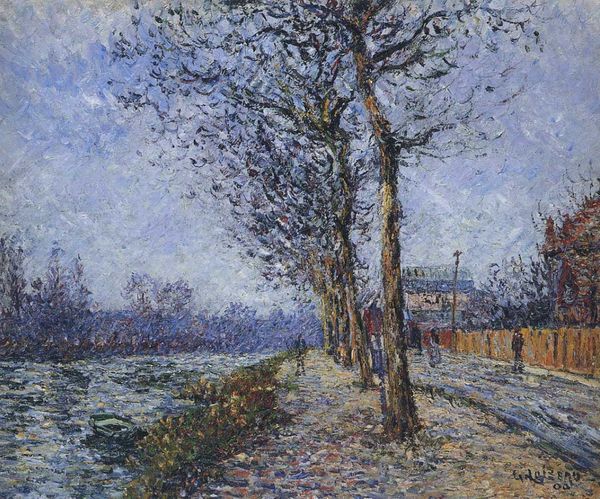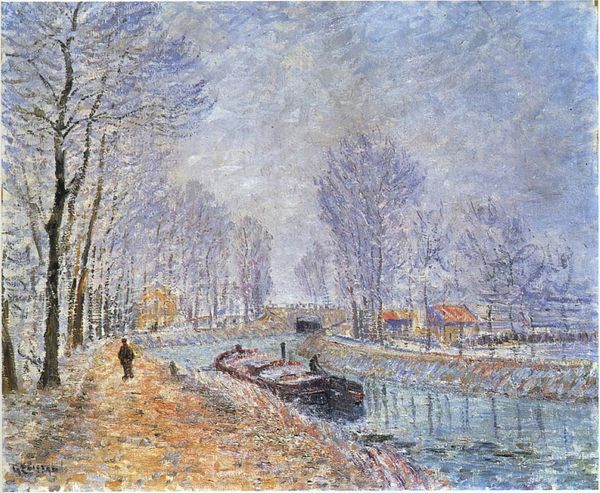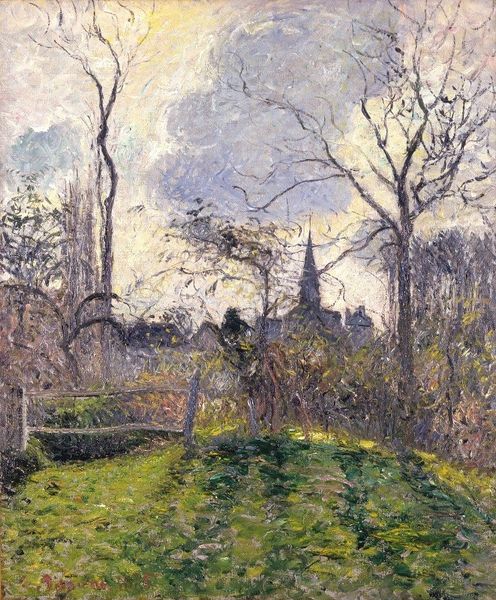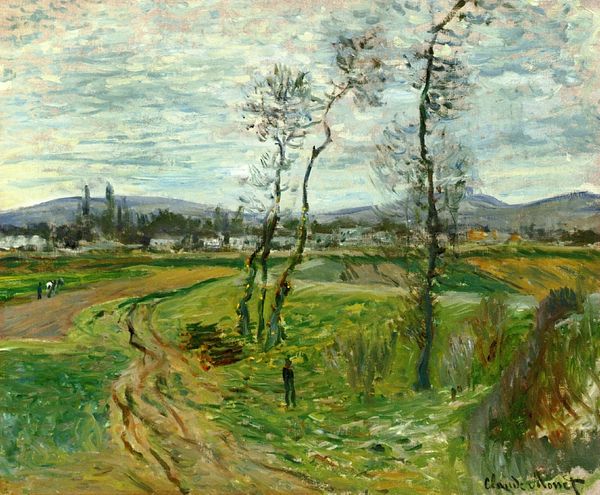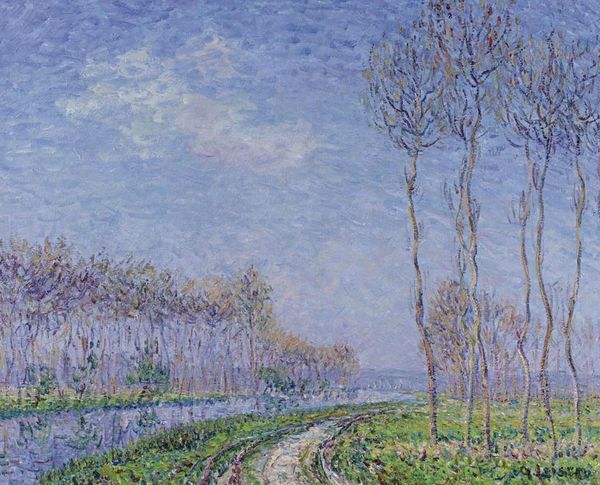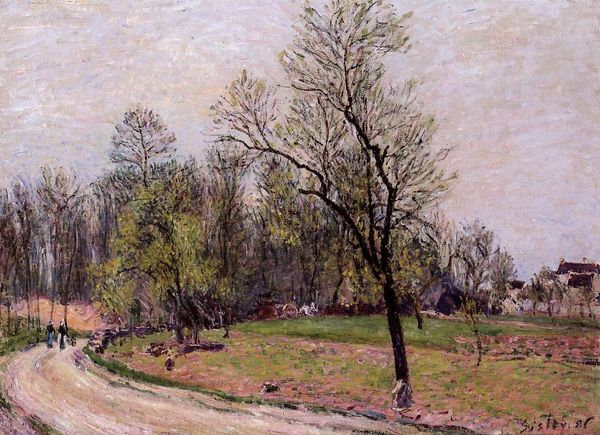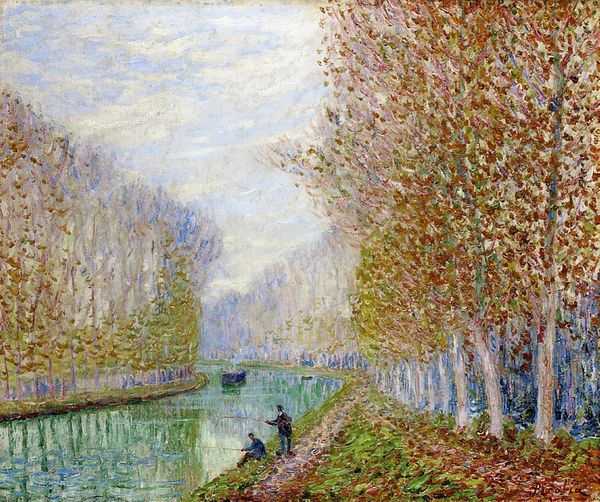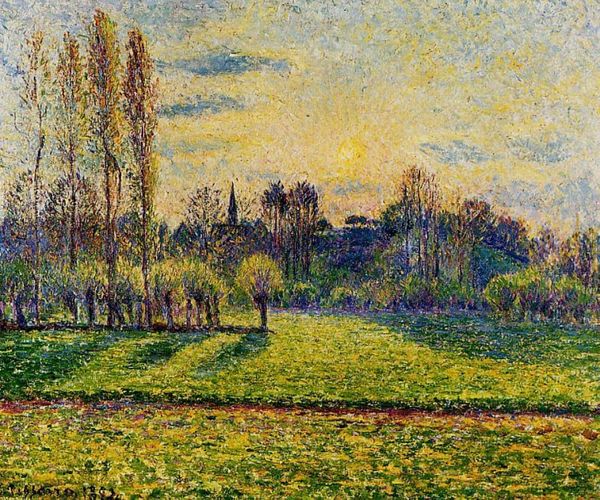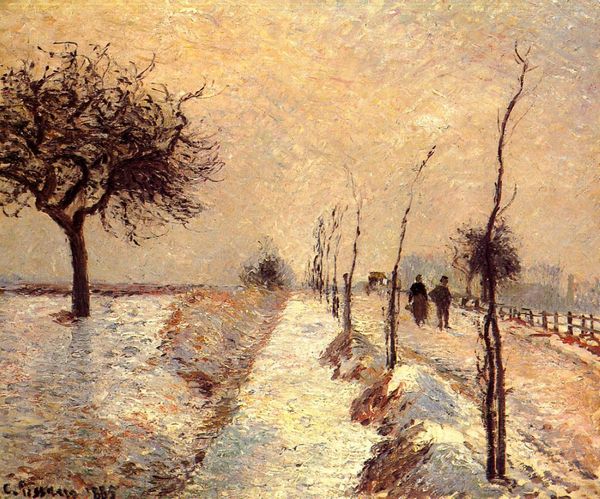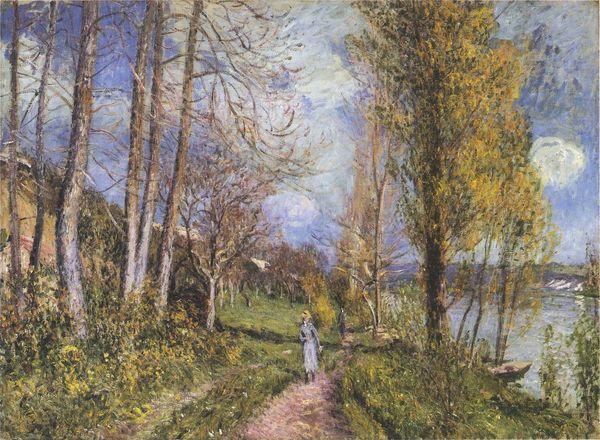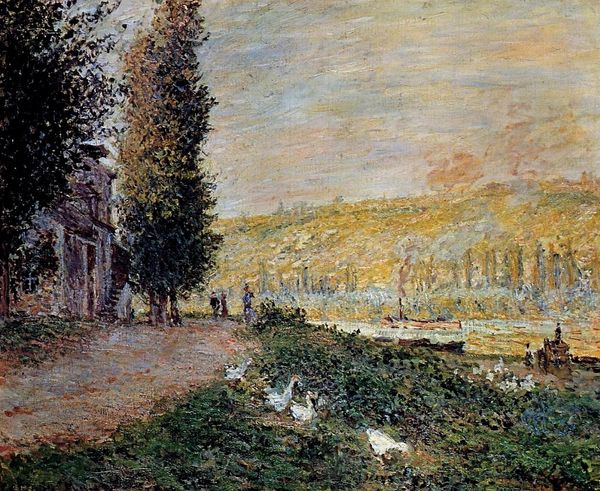
painting, plein-air, oil-paint
#
portrait
#
tree
#
sky
#
mother nature
#
painting
#
impressionism
#
plein-air
#
oil-paint
#
landscape
#
impressionist landscape
#
nature
#
natural-landscape
#
france
#
cityscape
#
realism
Copyright: Public domain
Curator: Looking at Camille Pissarro's "The Path of Basincourt," completed in 1884, one is immediately struck by its gentle luminescence. There's a quietude that settles over the whole composition. Editor: Yes, the atmosphere is rather melancholic. The colors, while beautiful, evoke a sense of fading, of late autumn drawing towards winter. The lone figure, almost swallowed by the landscape, accentuates that feeling of isolation and introspection. Curator: Considering Pissarro's anarchist leanings and his commitment to depicting everyday life, I read the painting somewhat differently. The solitary figure could represent the working-class woman, grounded in the landscape, part of the broader rural economy of late 19th century France. Editor: That is a fascinating interpretation! Still, one cannot ignore the pervasive symbols of decline in the color palette. The browns, yellows and oranges have clear visual links to mortality and fading beauty. The church spire in the background is a signifier of communal belief and provides hope. Curator: True, but Pissarro often situated such figures within a social context. This wasn't simply a detached aesthetic exercise. This woman isn’t divorced from her surroundings; she is inseparable from the agricultural rhythms that structured peasant life in that historical moment. Consider the rise of industrialism; what were women doing at this point and how were they represented? Pissarro’s consistent attention to rural life made him distinct from many Impressionists who romanticized Paris. Editor: You bring up very important points. But still, let’s turn to art itself. Do the muted hues and the overall feeling perhaps express a longing for a simpler past? This connects to deep human emotions: nostalgia and a longing to return to one's origins and to find solace in a changing, industrializing world. It speaks to humanity and history, perhaps without any artist intent at all! Curator: I would say that those deep feelings of a return to origin would apply more readily to someone with a deep religious conviction, and with Pissarro it’s a socio-economic, even revolutionary outlook which takes precedence over this! It makes you really look at this with renewed perspective. Editor: Yes, definitely. His intent to root the artwork in social and economic change and highlight how women occupied those environments cannot be argued! It's thought provoking to interpret artwork based on gender and race because they give insight into a larger cultural shift! Curator: Indeed! This piece is such a poignant example of Impressionism’s capacity to reflect socio-political landscapes alongside pure aesthetic beauty.
Comments
No comments
Be the first to comment and join the conversation on the ultimate creative platform.
